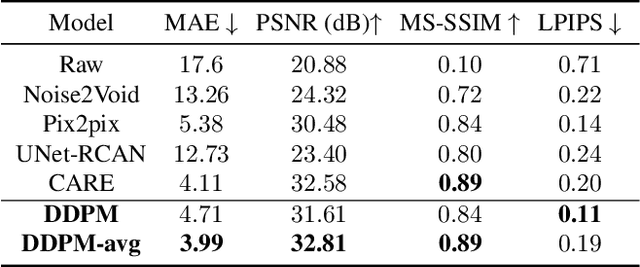Johanna Rahm
Denoising diffusion models for high-resolution microscopy image restoration
Sep 18, 2024



Abstract:Advances in microscopy imaging enable researchers to visualize structures at the nanoscale level thereby unraveling intricate details of biological organization. However, challenges such as image noise, photobleaching of fluorophores, and low tolerability of biological samples to high light doses remain, restricting temporal resolutions and experiment durations. Reduced laser doses enable longer measurements at the cost of lower resolution and increased noise, which hinders accurate downstream analyses. Here we train a denoising diffusion probabilistic model (DDPM) to predict high-resolution images by conditioning the model on low-resolution information. Additionally, the probabilistic aspect of the DDPM allows for repeated generation of images that tend to further increase the signal-to-noise ratio. We show that our model achieves a performance that is better or similar to the previously best-performing methods, across four highly diverse datasets. Importantly, while any of the previous methods show competitive performance for some, but not all datasets, our method consistently achieves high performance across all four data sets, suggesting high generalizability.
 Add to Chrome
Add to Chrome Add to Firefox
Add to Firefox Add to Edge
Add to Edge